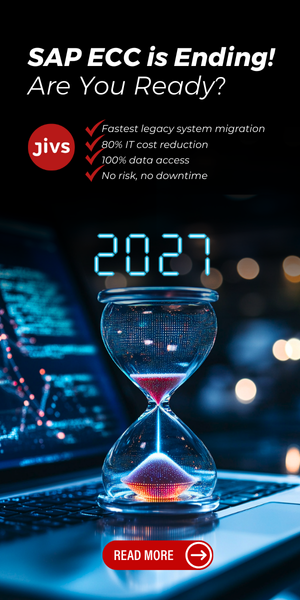Other than a job scooping ice cream as a teenager, I’ve worked in ERP my entire 24-year career. In that time, I’ve worked with organizations of all sizes and across industries, giving me a broad perspective on how companies’ needs change as they grow.
It’s exciting to see a company growing so much and so fast that their systems and processes can’t keep up. But it’s also a critical juncture in the evolution of the business, as they need to pivot to a more scalable and capable solution – one that will not only meet their needs today but adjust to fit as they grow.
This is when many of these companies might start considering an ERP system.
Whereas before they may have been able to get by with a patchwork of applications, spreadsheets and manual processes, with growth comes greater business complexity that demands the powerful orchestration of systems, processes and people that ERP provides.
And in today’s connected, always on, 24/7 world, the cloud is the environment of choice for growing companies looking to deploy business and ERP systems.
Packing a punch, at a lower cost from the time it was invented in the 1970s, ERP has been thought of as relevant primarily for large, industry-leading companies, who can afford the upfront costs – like licensing, infrastructure, configuration, customization, and implementation – and task entire teams to manage it on an ongoing basis.
The cloud changes the long-held attitude that only large, industry-leading companies can take full advantage of an ERP system. It puts advanced ERP technology in the hands of small and large companies alike, without the need for significant upfront or ongoing costs. For growing companies, it means they can access the same capabilities as their larger competitors, out of the box and at a reasonable cost, enabling them to better compete in their industry.
As research firm IDC notes, the wide range of cloud services offered by leading providers “makes it possible to use the optimum cost/performance service without increasing administrative costs or business risk”. They offer “less upfront costs. More flexibility. Pay only for what you need when you need it.” Plus, companies that prioritize application modernization and data augmentation technology projects found they “can quickly realize [a] reduction in budget pressure”.
Cloud enables companies to derive greater value from an ERP system at a lower cost and with less risk. But it can also provide greater speed and flexibility – which leads us to our next two points in the case for cloud ERP for growing companies: a system that grows with you and that allows you to consume innovation regularly and rapidly.
A serving of cloud: ERP that grows alongside your business
When I started my career as a consultant implementing ERP, companies treated ERP as a moment in time. They built all the functionality they wanted into the system at the time of implementation, and then it remained relatively fixed. Adding functionality required expensive customization, which made upgrading to the latest software version even more difficult.
With Cloud ERP, the thinking has shifted from a moment in time to a journey, allowing you to take alternate paths as your business evolves along the way.
Today, companies don’t need to worry about getting everything built into their ERP right out of the gate. They don’t have to (and can’t!) know what they’ll need in the future, as their businesses evolve, grow and morph to mirror economic realities and opportunities. Instead, they can get started with what meets their needs today and add new functionality when necessary, often with just a click of a button.
Companies that plan to go international in the future will benefit most from this aspect. Cloud ERP offers localization tools that make it easier to expand into new countries with different languages, currencies, requirements and regulations – and the system adapts as these requirements change.
These days, we’re seeing more Growing businesses that want to shift from selling products to selling subscriptions, or to an as-a-service model, also benefiting greatly from the agility of Cloud ERP. With Cloud ERP, companies have access to pre-built, standardized processes for these scenarios. Functionality isn’t fixed. It expands as you need it.
Rapid and continuous innovation
The pace of innovation is increasing and will continue to do so. Just look at how quickly generative AI has become a viable and almost necessary tool for businesses.
Not too long ago, updating on-premises software and taking advantage of new innovations took months or years. Cloud-based innovations, on the other hand, can be adopted in days or hours, accelerating the speed with which businesses can test and realize their potential.
The ability to adopt innovation rapidly and continuously is, of course, only as good as the ERP provider you’ve chosen. You need to select the right cloud ERP provider who is going to deliver valuable innovations, on a regular basis, that are appropriate for your industry.
Growth is exciting! But with it comes a realization that the systems and processes that got you here won’t necessarily take you as far as you want to go. Cloud ERP gives you the powerful technology, flexibility and access to cutting-edge innovations you need to navigate your growth journey, no matter where it takes you.






